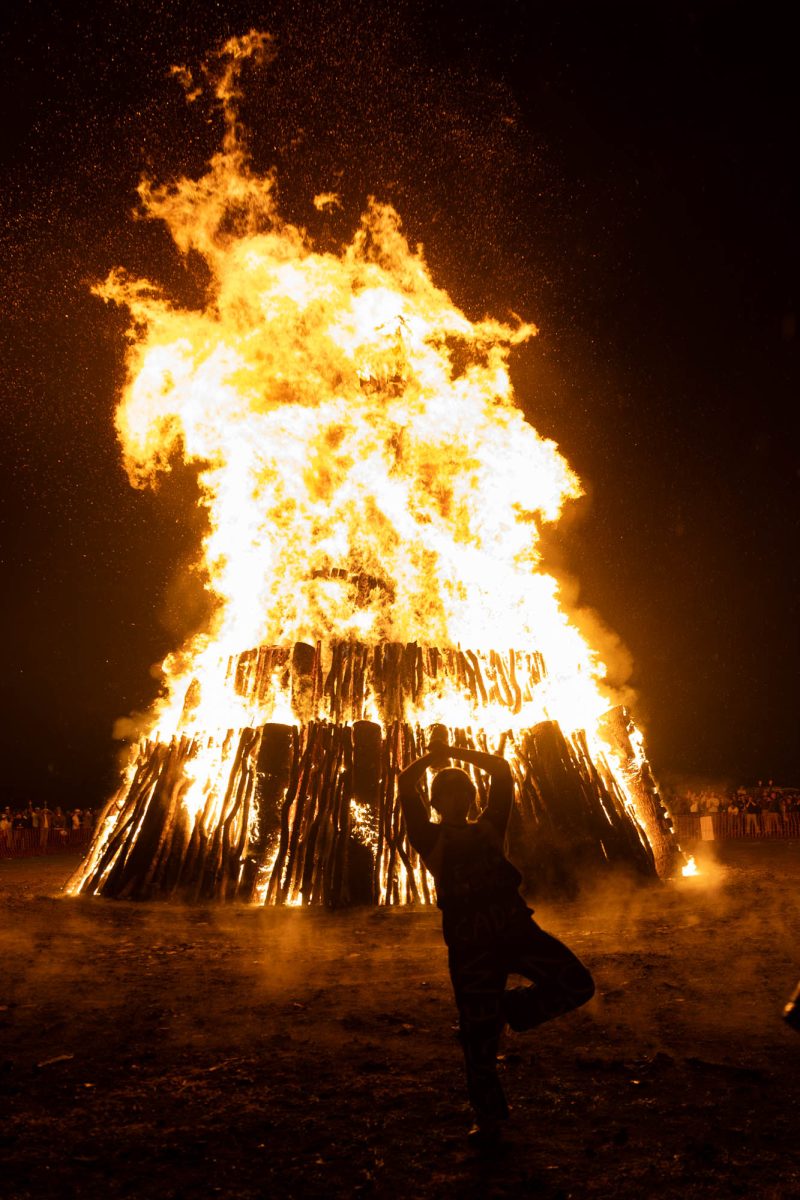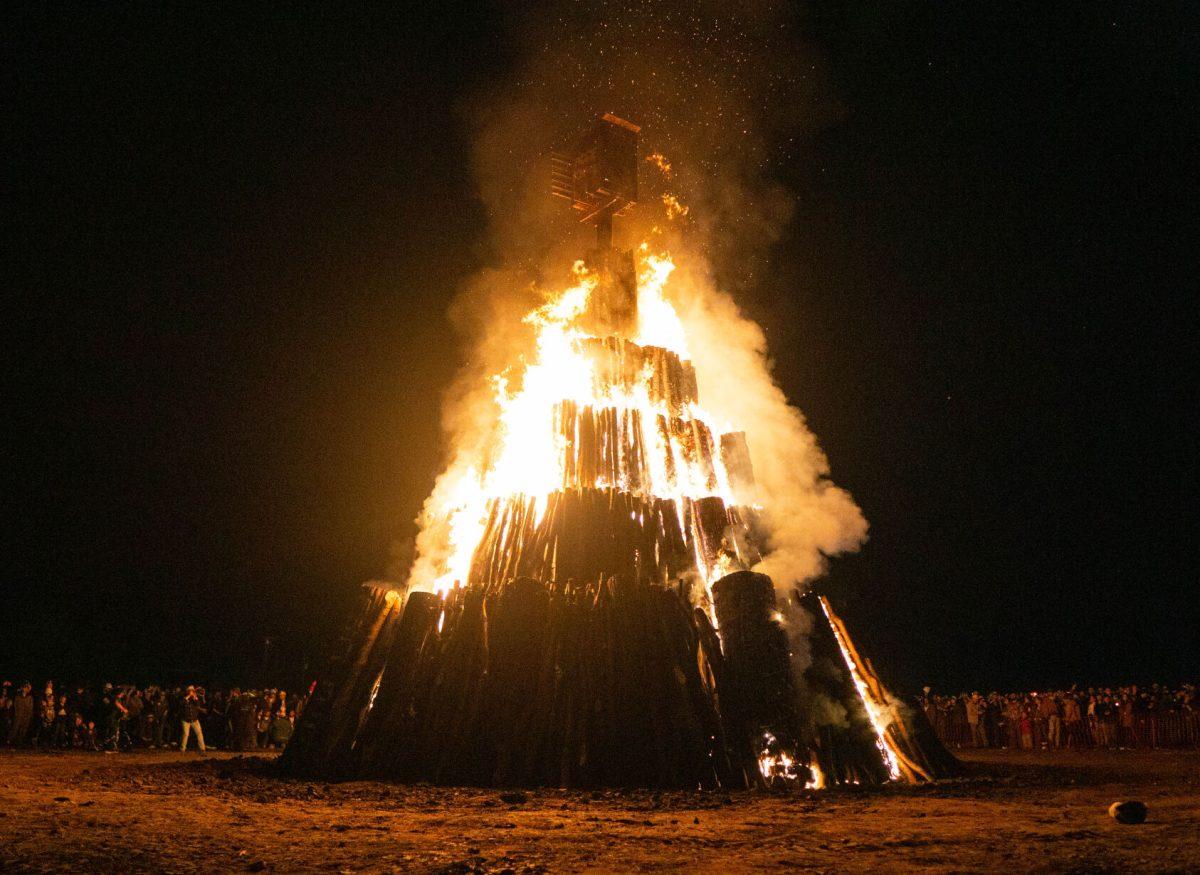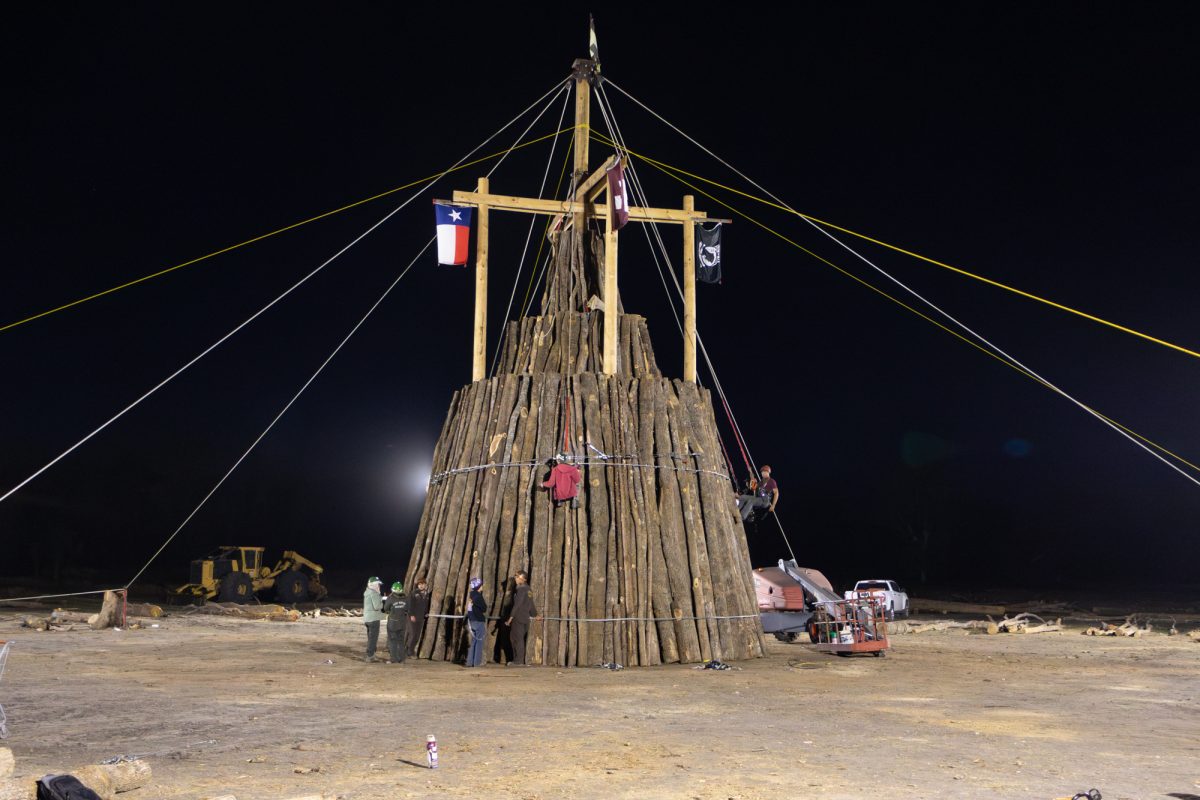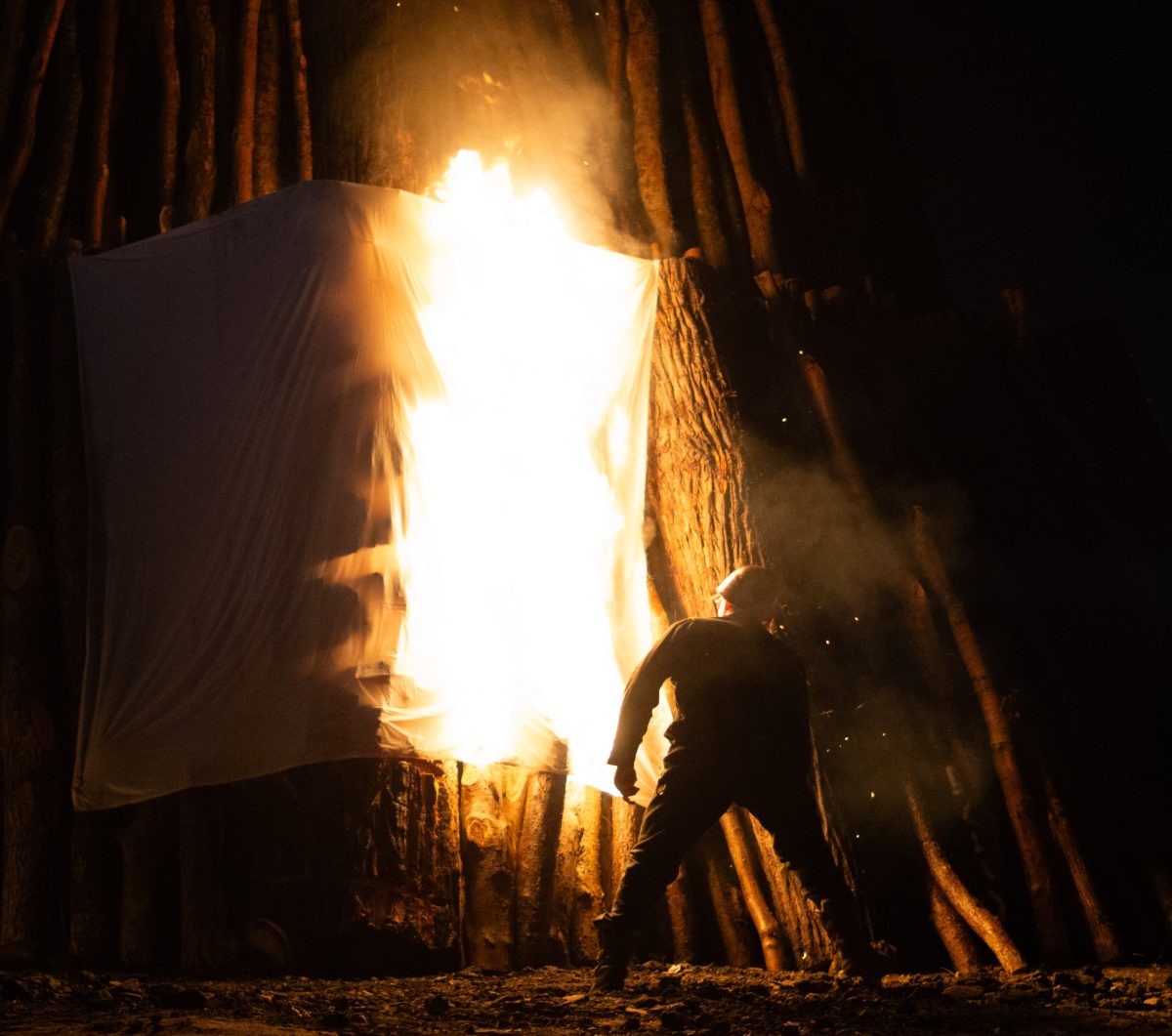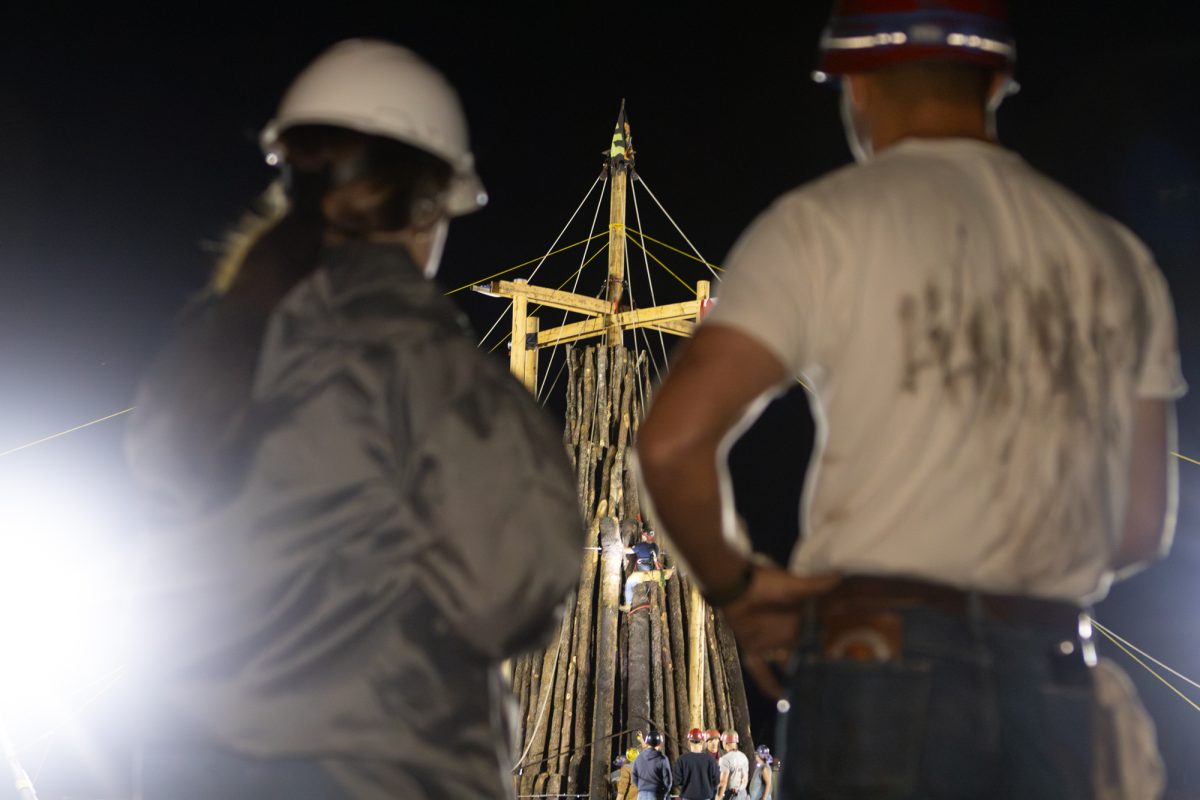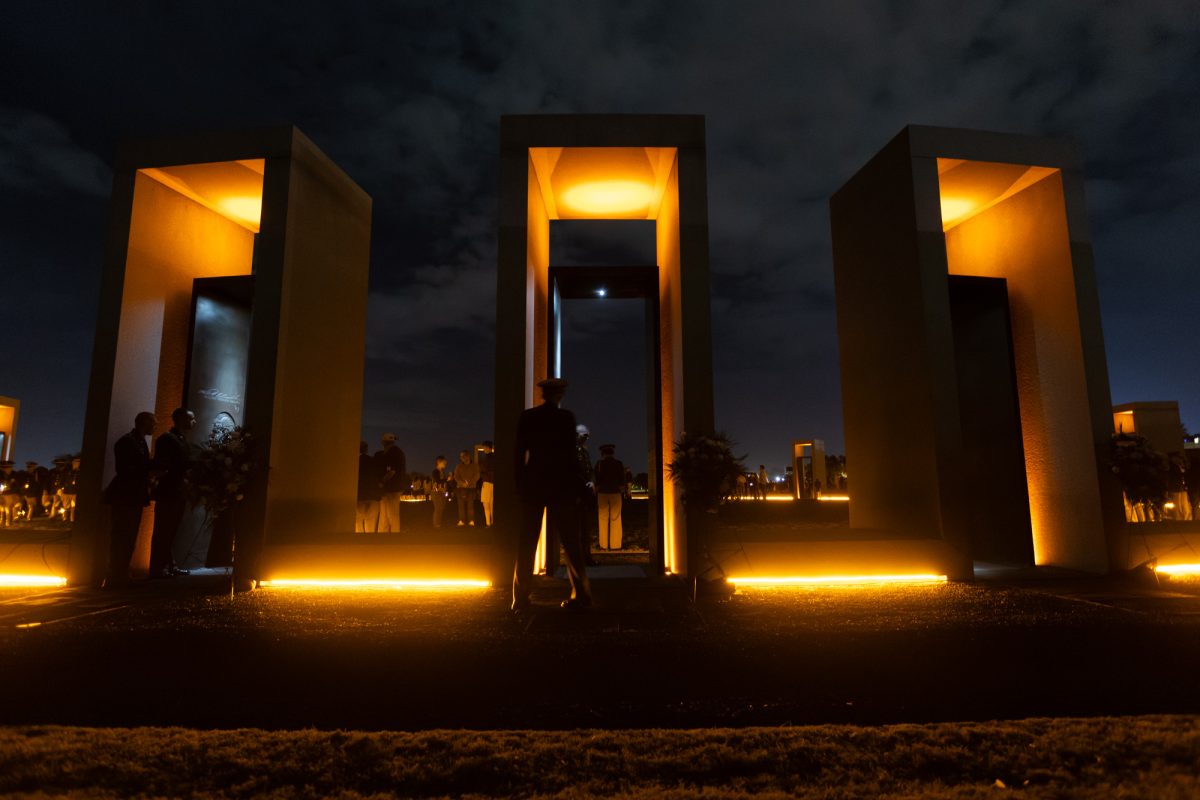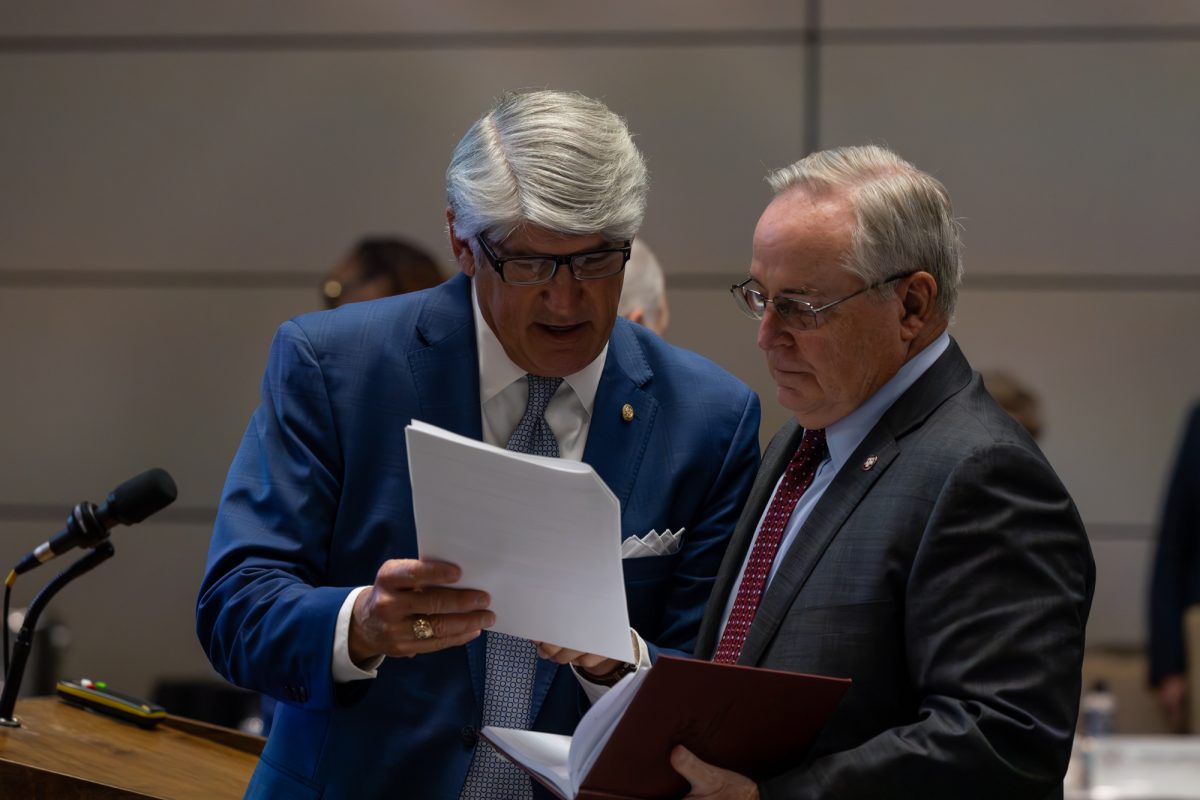In the days following Nov. 16, 1907, the sleepy campus in what would eventually become College Station was buzzing. The football team was undefeated and, upon returning home on a long train ride after beating national powerhouse Tulane in New Orleans, needed a way to celebrate.
At the time, the town of College Station was a shell of what it is today, consisting of only a small campus and a train station. Since there wasn’t much opportunity for entertainment, the men attending Texas AMC often had to improvise.
Madeline Schulz, finance junior and Traditions Council vice chair of administration and finance, said this longing for a way to celebrate led to one of the greatest A&M traditions.
“They were really excited, and when men are excited they like to light things on fire,” Schulz said. “They just got a whole bunch of trash from the train station, lit it on fire and decided to do it again the next year.”
Kyle Sewell, supply chain management junior and Traditions Council E. King Gill subcommittee chair, said the builders of later Bonfires got a little too excited, but their enthusiasm led to a new chapter in the evolution of the new tradition.
“In the 1920s, you started having the Bonfire made of logs, but in 1935 some overzealous Ags dismantled a man’s barn getting wood and scrap for Bonfire,” Sewell said. “That led to the first log and legal Bonfire in 1936, where it was required to cut down trees to build Bonfire.”
The new requirements led to much more preparation and time commitment, as generations of Aggies worked countless hours to cut down trees, transport them to campus and finally build the Stack. Sewell said this extra time gave Aggies a better sense of unity.
“It wasn’t just the night of Burn, it was the months leading up to it,” Sewell said. “Each class made it their own, and something very special that people looked forward to. When they burned it, it wasn’t just burning a Bonfire, it was [their] Bonfire that they built.”
Each class year tried to “one up” the year before them as the tradition continued to evolve. Bonfire got larger and larger, and eventually peaked in 1969 at 109 feet tall — one foot shorter than Rudder Tower. Schulz said the height raised concerns among Bryan-College Station residents, and from then on a city ordinance set Bonfire’s height to between 55 and 60 feet.
While most former students tell stories of the lasting friendships Bonfire formed, not all of the memories made came from positive experiences. Tragedy in 1955, when then-sophomore cadet James Sarran died to save the life of another cadet.
“James Sarran pushed a freshman out of the way of an oncoming car. He was killed by the car, and it’s the reason that freshmen in the Corps today don’t thank their upperclassmen, because Mr. Sarran’s fish never got to thank him,” Sewell said.
Unfortunately, this tragedy would not be the last. For more than 60 years while it was university-sanctioned, Bonfire failed to burn only twice. The first was by choice, when it was dismantled following the 1963 assassination of President John F. Kennedy as a sign of respect.
The second time, however, was not by choice. In the early hours of Nov. 18, 1999, Stack collapsed, killing 12 students and injuring 27 others.
As former Corps Public Relations Officer Scott Jarvis, Class of 2000, recalls, the 1999 Bonfire began just like every other.
“There was nothing leading up to it indicating that it was going to be a different year,” Jarvis said. “Of course that changed in a hurry, but it was cold, Bonfire weather, and there was hard work going on those clear November nights.”
News spread across the campus, state and nation extremely fast. Campus leaders at the time faced the challenge of bringing Texas A&M back together for a sense of normalcy. On the night usually reserved for the massive gathering at the actual burning of the Stack, Jarvis said one of the most iconic and awe-inspiring events in Aggie history took place.
“We had to figure out what we were going to do that night, because we couldn’t do nothing, and we couldn’t just have a normal yell practice,” Jarvis said. “You had to be sensitive to what the families wanted and what the students needed. That’s when we decided to do the candlelight vigil at the Bonfire site before moving into Kyle for yell practice. Looking back on it, it turned out to be a beautifully magical moment.”
The evolution of Bonfire
November 16, 2014
0
Donate to The Battalion
$2065
$5000
Contributed
Our Goal
Your donation will support the student journalists of Texas A&M University - College Station. Your contribution will allow us to purchase equipment and cover our annual website hosting costs, in addition to paying freelance staffers for their work, travel costs for coverage and more!
More to Discover




